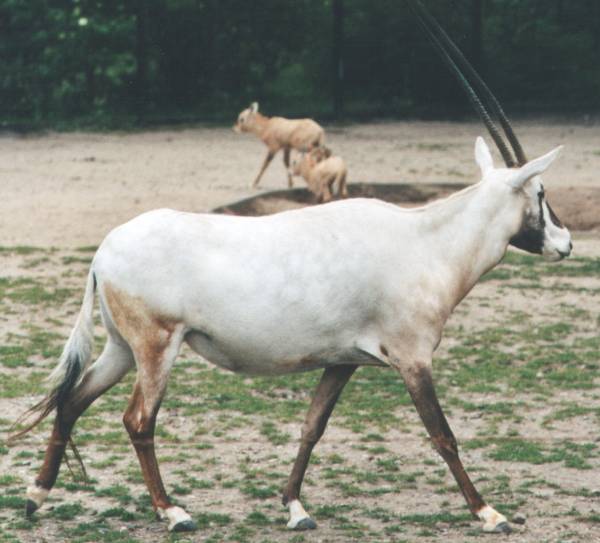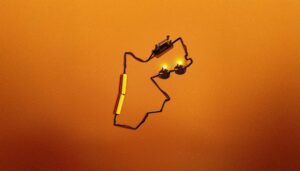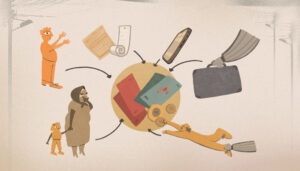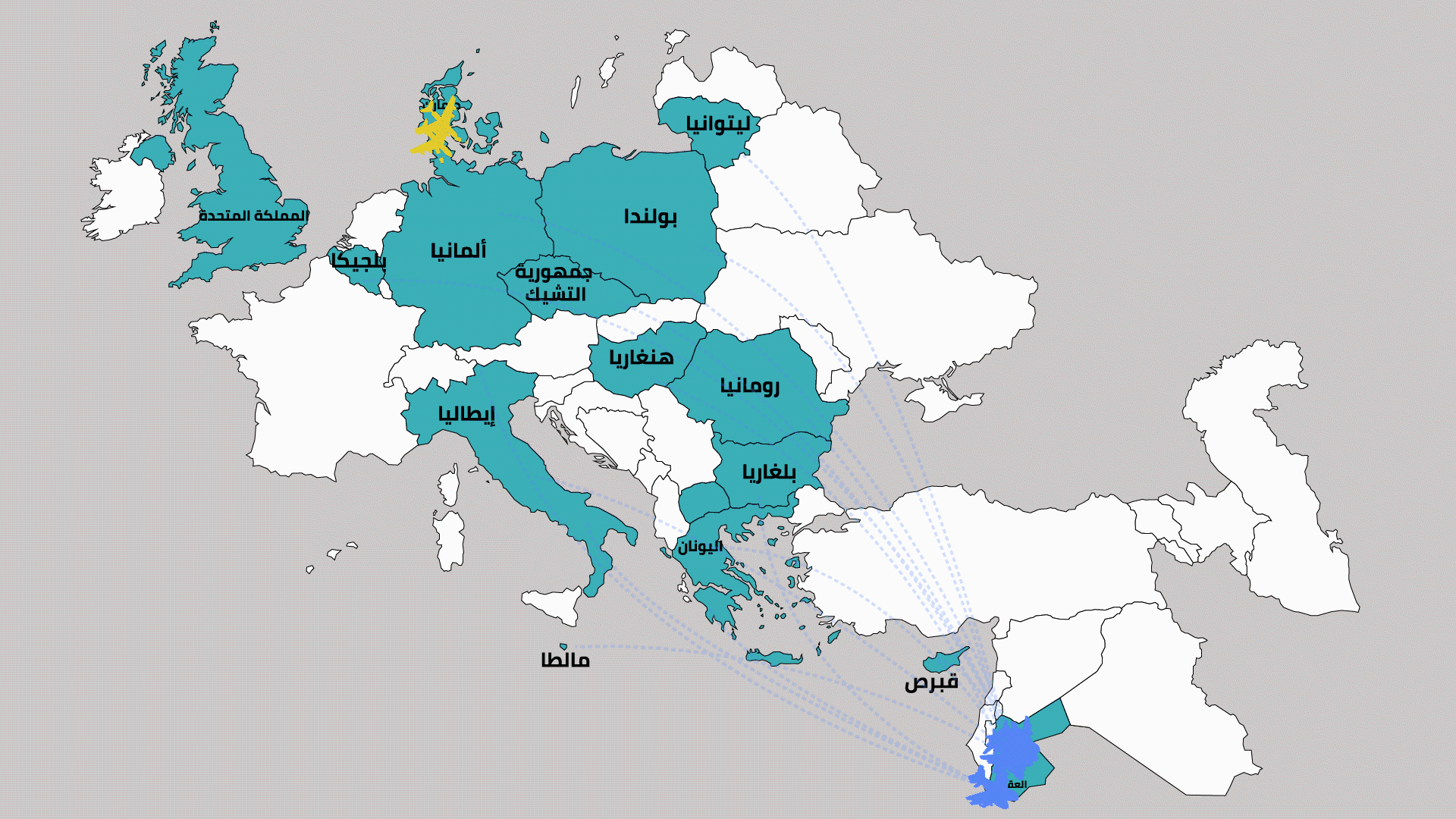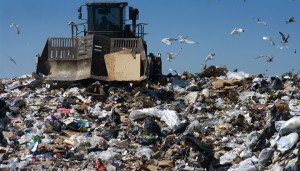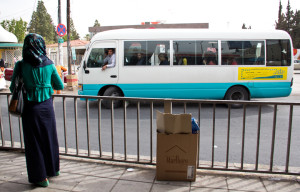Written by Matthew Teller.
Early this month, twenty Arabian oryx – a kind of white antelope, native to the Middle East – were released into the wild at Wadi Rum in Jordan, as the latest step in efforts to reintroduce the animal to the wild after its near-extinction in the 1970s.
A bit of background: oryx once roamed widely from Egypt to Syria to Oman. They were a prize target for hunters, who celebrated the chase in epic poems: oryx became symbols of grace and fortitude, mythologized like bulls in Spanish culture or stags in British culture. The arrival of 4WD vehicles and automatic weapons in the 1940s meant that hunters could finally outpace the oryx – and in twenty years, they massacred virtually the whole population. A few breeding pairs were saved and flown to Phoenix, Arizona, to form the nucleus of a ‘World Herd’, from which all surviving oryx are now descended.
Since then various countries have brought in reintroduction programmes, but almost none meets international guidelines. Oman could not control poaching at its huge reserve on the Jiddat al-Harasis plain, reduced the boundaries and was struck off UNESCO’s World Heritage Site list. Dubai has a desert reserve, centred on the Al-Maha luxury hotel. Abu Dhabi has crammed hundreds of oryx (along with giraffe and heaven knows what else) onto the small Sir Bani Yas island and called it a wildlife park with – predictably – a luxury hotel. They’re repeating the theme at a desert reserve in the south, due to open later this year with another luxury hotel, Qasr al-Sarab. Jordan’s habitats have been destroyed by overgrazing of sheep and goats; its oryx have remained penned in a small reserve at Shaumari for the last 30 years.
Only in Saudi Arabia, where there is much less pressure for tourism development, has oryx reintroduction worked, at the immense Uruq Bani Maarid reserve in the Empty Quarter.
Now Abu Dhabi has struck a deal with Jordan to release oryx at Wadi Rum. Twenty animals were flown over earlier this year for acclimatization, and the enclosure gates were opened yesterday. Abu Dhabi newspaper The National sent a journalist – her report is here.
All looks great, eh? Nice, feel-good story.
Unfortunately, this is not good journalism. Jordan’s RSCN nature conservancy society has been conducting experiments in oryx release at Wadi Rum for the last 7 years – but Wadi Rum is not an oryx habitat. It’s too sandy and too mountainous: the oryx always roamed south and had to be brought back. Several died from broken legs sustained on the scree slopes. The RSCN eventually called a halt and pulled out. Then the semi-autonomous Aqaba Special Economic Zone Authority (a commercial body, not a conservation organization) stepped in to try and boost local income through increased tourism to the area. It is they, not the Jordanian government in Amman, who have struck the deal with Abu Dhabi: this oryx release is a laudable effort, but it has little or no scientific basis. It is economic. I have talked to several conservationists, including independent scientists with no axe to grind, who are well aware the release will fail.
The article is also littered with factual errors. Sheikh Zayed did make a contribution to saving the species from annihilation, but the real work had been done years before with the establishment of the World Herd. Oryx conservation projects are not ‘planned’ for Saudi Arabia, but have long been under way there.
And why did they send someone with poor Arabic? “Aion elmaha” – or, more properly, “ayoun al-maha” – does not mean ‘beautiful eyes’, but ‘the eyes of the oryx’.
As for a professional journalist recycling the sentimentality of the father standing with his hand on his son’s shoulder – well, there’s no accounting for taste.
A lazily written story, presented as if it’s the conclusion – save oryx, breed oryx, release oryx, job done.
In truth, this is just the start. What is now involved is a pouring of resources into making sure the oryx survive: manpower, cars, data collection, analysis, maintenance of GPS collars and monitoring equipment, perhaps intervention, enforcement of anti-poaching laws, environmental education for local people, development of tourism strategies… the list goes on! This is why poor countries like Jordan can’t afford to do it alone – and why a highly-placed source within the Jordanian conservation community told me that, given a choice, he’d prefer to drop the whole oryx programme and focus attention on something less expensive and more likely to succeed.
But the oryx has become a popular symbol of conservation (see logo), like the panda or the tiger – despite the fact that conservation science has moved on from spotlighting big mammals and is now devoted to broader, but less sexy, preservation of habitats (which ensures survival of hundreds of species together).
Once the oryx was allowed to be eliminated in the wild, reintroducing it means we have now become entangled in a never-ending story of management and control, pretty much in perpetuity – rather like with the bison in North America.
The Wadi Rum release is an interesting experiment, but it is not a “success story”. I’m disappointed in the usually excellent National, leaving its readers so ill-informed.
Editor’s note: Publish with the author’s permission.
